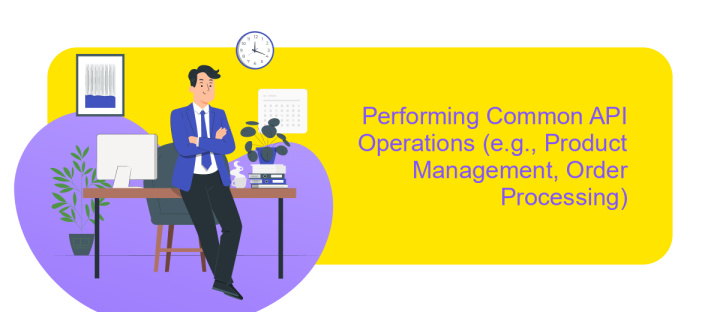Prestashop API Integration
Integrating the PrestaShop API into your e-commerce platform can significantly enhance your online store's functionality and user experience. This powerful tool allows seamless data exchange between your PrestaShop store and other applications, enabling efficient inventory management, order processing, and customer relationship management. In this article, we will explore the benefits of PrestaShop API integration and provide a step-by-step guide to help you get started.
Introduction to PrestaShop and its API
PrestaShop is a robust, open-source e-commerce platform that empowers businesses to create and manage their online stores with ease. Known for its flexibility and scalability, PrestaShop serves various business sizes, from small startups to large enterprises. The platform offers a wide range of customizable features and modules, allowing merchants to tailor their online presence to meet specific needs and enhance customer experience.
- Open-source and free to use, with a large community of developers and users.
- Highly customizable with numerous themes and modules available.
- Supports multiple languages and currencies, making it ideal for global businesses.
- SEO-friendly architecture to improve search engine rankings.
- Comprehensive analytics and reporting tools for informed decision-making.
The PrestaShop API is a powerful tool that allows developers to integrate external applications and services seamlessly. It provides access to store data, enabling tasks such as product management, order processing, and customer relationship management. By leveraging the API, businesses can automate operations, streamline workflows, and enhance their e-commerce capabilities, ultimately driving growth and efficiency.
Understanding the PrestaShop API Architecture

PrestaShop API is a powerful tool designed to facilitate seamless integration between your online store and external applications. Its architecture is built around RESTful principles, allowing developers to interact with the PrestaShop platform using standard HTTP methods. This design ensures that operations such as creating, reading, updating, and deleting resources are straightforward and efficient. The API provides access to various resources, including products, orders, customers, and more, enabling businesses to automate processes and enhance their e-commerce functionality.
Understanding the PrestaShop API architecture is crucial for leveraging its full potential. It supports both XML and JSON formats, providing flexibility in data exchange. Authentication is handled through a unique API key, ensuring secure access to your store's data. For those looking to streamline their integration setup, services like ApiX-Drive can be invaluable. ApiX-Drive offers a user-friendly interface to connect PrestaShop with other platforms, reducing the complexity of manual API coding. By utilizing such services, businesses can focus on growth and efficiency, rather than the intricacies of API management.
Authentication and Authorization

Integrating with the PrestaShop API requires a solid understanding of its authentication and authorization mechanisms. The API utilizes a key-based system to ensure secure access to your store's data. Each API request must include an API key, which acts as a unique identifier for the application making the request. This key is generated within the PrestaShop back office and should be kept confidential to prevent unauthorized access.
- Navigate to the PrestaShop back office and access the 'Advanced Parameters' section.
- Select 'Webservice' and click 'Add New Webservice Key'.
- Generate a new API key and set permissions for the resources you wish to access.
- Save the key and use it in the 'Authorization' header of your API requests.
Once the API key is set up, ensure that your application handles it securely. Avoid hardcoding the key in your source code and consider using environment variables to manage it. Regularly review and update permissions associated with the API key to maintain the security of your PrestaShop store. Proper authentication and authorization practices are crucial for safeguarding sensitive data and ensuring smooth integration with the PrestaShop API.
Performing Common API Operations (e.g., Product Management, Order Processing)

Integrating with the PrestaShop API allows businesses to streamline their e-commerce operations, making tasks such as product management and order processing more efficient. With the API, you can automate the creation, updating, and deletion of products, ensuring that your online store is always up-to-date with the latest inventory.
Order processing is another critical aspect that can be optimized using the PrestaShop API. By automating order retrieval and status updates, businesses can improve customer satisfaction and reduce manual errors. The API provides endpoints for accessing order details, updating order statuses, and managing customer information, which are essential for maintaining smooth operations.
- Create, update, and delete products programmatically.
- Retrieve and update order statuses efficiently.
- Access detailed customer and order information.
- Manage inventory levels and pricing dynamically.
Overall, leveraging the PrestaShop API for common operations like product management and order processing can significantly enhance the efficiency and accuracy of your e-commerce platform. By automating these processes, businesses can focus on growth and customer engagement, leaving routine tasks to be handled seamlessly by the API.


Best Practices and Troubleshooting
When integrating with the PrestaShop API, it's crucial to follow best practices to ensure a smooth and efficient process. Firstly, always keep your API credentials secure and regularly update them to prevent unauthorized access. Utilize version control systems to manage changes in your integration scripts, allowing for easy rollback in case of issues. Additionally, implement robust error handling and logging mechanisms to quickly identify and resolve any issues that may arise. Consider using a service like ApiX-Drive to automate and streamline your integration processes, reducing manual errors and improving overall efficiency.
Troubleshooting common issues with PrestaShop API integration involves a systematic approach. Start by verifying the API endpoint and ensuring that your requests are correctly formatted according to the API documentation. Check for network issues that might be affecting connectivity. If you encounter authentication errors, double-check your API keys and permissions. Make use of logging to track API requests and responses, which can provide valuable insights into any problems. If issues persist, consult PrestaShop community forums or support channels for additional guidance. Regularly update your integration scripts to align with the latest API changes and improvements.
FAQ
What is PrestaShop API Integration?
How can I use PrestaShop API for inventory management?
What are the authentication methods for PrestaShop API?
How do I handle errors when integrating with PrestaShop API?
Can I integrate PrestaShop with CRM systems?
Apix-Drive will help optimize business processes, save you from a lot of routine tasks and unnecessary costs for automation, attracting additional specialists. Try setting up a free test connection with ApiX-Drive and see for yourself. Now you have to think about where to invest the freed time and money!

